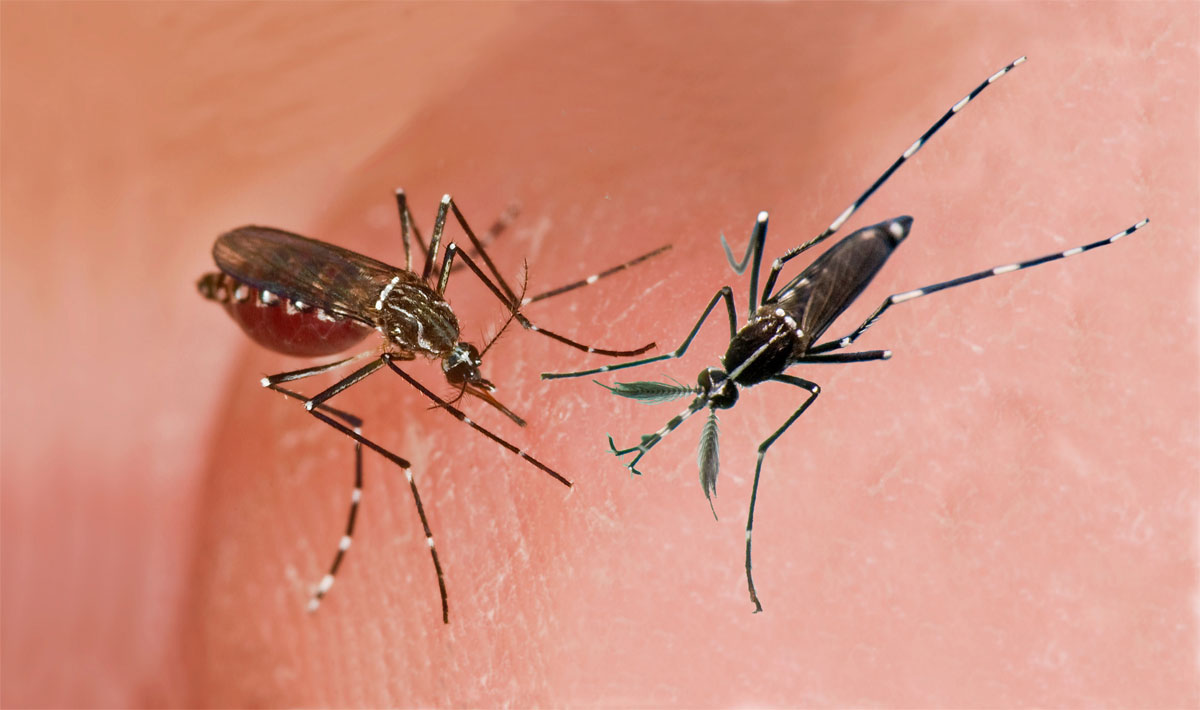Invasion of the Asian tiger mosquito

Sometime during that glorious decade known as the 1980s, a shipment landed in Houston, Texas. A shipment carrying more than its cargo. The point of origin was Japan. The shipment was used tires. The payload was Asian tiger mosquitoes.
Within years of landing in Texas the tiger mosquito, Aedes albopictus, rapidly displaced resident populations of Aedes aegypti mosquito. Both are important disease vectors. The native being considered the primary vector of breakbone fever — or dengue. And the Asian tiger mosquito recently emerging as the most important transmitter of chikungunya virus and yellow fever. By September 1986, the range of the Asian tiger mosquito had extended as far north as Utah. The demise of the native Aedes aegypti had already begun — representing not a transient ecological phenomenon, but the beginning of permanent colonisation, and resulting in rapid declines and extinctions of the native mosquito species.
Aedes aegypti originated in Africa and was introduced to the Americas between the 15th and 18th centuries, during the height of the slave trade and most likely on ships transporting slaves. They quickly established across the south eastern part of the US. Then what followed was a demise in the face of stiff competition and after centuries of habitation in America. An inadvertent metaphor for the “Post-America” era we now inhabit.
Across the Americas, Europe and Africa, Peru, Brazil, Mauritius, New Zealand, Guam and even the island of Fiji, invasive mosquito species have been documented to colonise. The tiger mosquito that landed in Texas invaded most areas of the southeast United States within 3 years, a spectacularly rapid event forcing of A. aegypti out of its niche. A similar phenomenon was observed in Bermuda, where the colonisation and invasion was just as fast.
Two species cannot simultaneously occupy the same niche, and for years since researchers noticed the Asian tiger mosquito had overtaken the native species, hypotheses as to how this occurred have been bandied around. From larval resource competition, to greater reproductive efficiency of the tiger mosquito, to desiccation-resistant eggs of the tiger mosquito (which enhance survival in inhospitable environments).
Two species of mosquito within the same niche throws up an interesting predicament in terms of mating and competition for the female population. In Texas, the tiger mosquito can mate with the native species. The male tiger mosquito thought to be more aggressive in trying to mate with female resident species — like a sailor on shore leave — in comparison to the native males. But for some reason researchers couldn’t show this, even in laboratory cages.
The parasites within the tiger mosquito was posed as another hypothesis to explain colonisation. Both the tiger and native mosquitoes share a common parasite. Aedes mosquitoes typically harbour parasites of the genus Ascogregarina, and the species that parasitizes the tiger mosquito can also infect Aedes aegypti, leading to some impressive death rates.
All hypotheses proposed were inadequate on their own for explaining the patterns observed in nature, and none served as a good explanation to describe the colonisation of the tiger mosquito. Recently, a group of researchers from the Florida Medical Entomology Laboratory have added an interesting facet to the “competitive displacement” phenomenon.
A form of reproductive interference — satyrization. The term describes how males of one species mate with females of a related species, producing no viable offspring. A mechanism that has already been shown to lead to population extinctions in other species.
It all has to do with the mating balance in this unique mosquito species pair. The fact that both species share a common mating behaviour only makes it more likely that errant and erroneous mating will occur. The mistake of mating with an Asian tiger male is extremely costly for the native females, and can end up in sterilization and the loss of future reproductive potential. What researchers found was that where the species have coexisted for some time and interspecies mating occurs, the native females avoid mating with unsuitable Asian tiger males. And, it seems, this doesn’t occur at the outset — when two species are immediately introduced to one another.
They describe it as selection at work — or rather a way to protect their reproductive potential. This development of resistance to satyrization may allow recovery of native populations in the face of invading species. But this simple fact is a double edged sword, as a resurgent native population carry the risk of resurgent dengue fever.
[Image courtesy of Jim Newman]
 Follow
Follow
2 thoughts on “Invasion of the Asian tiger mosquito”
Comments are closed.